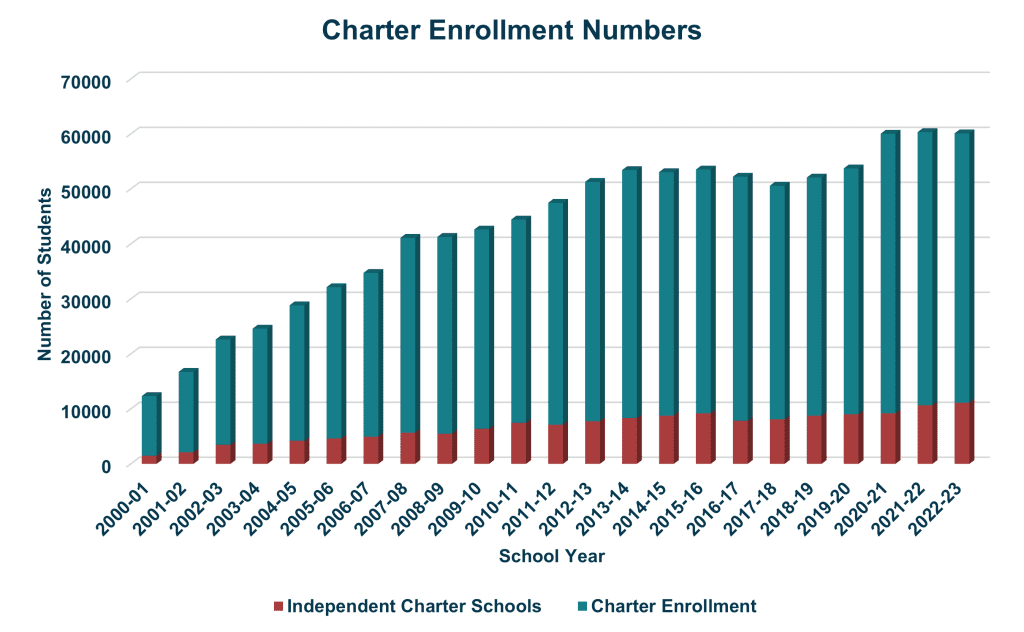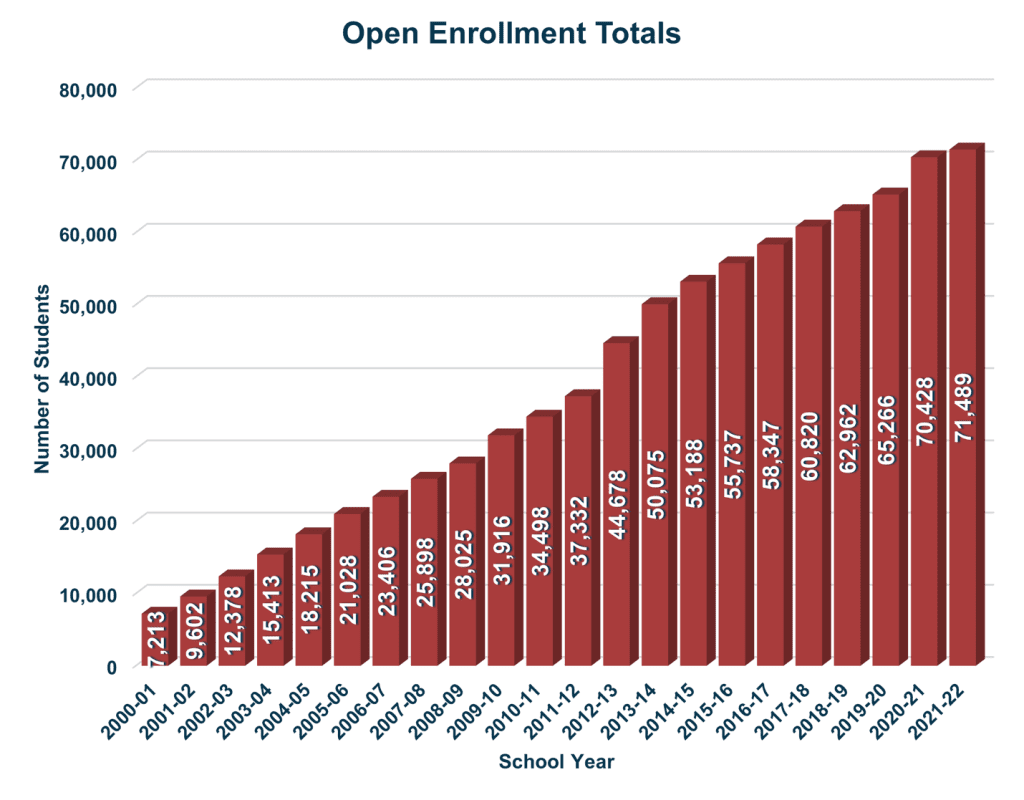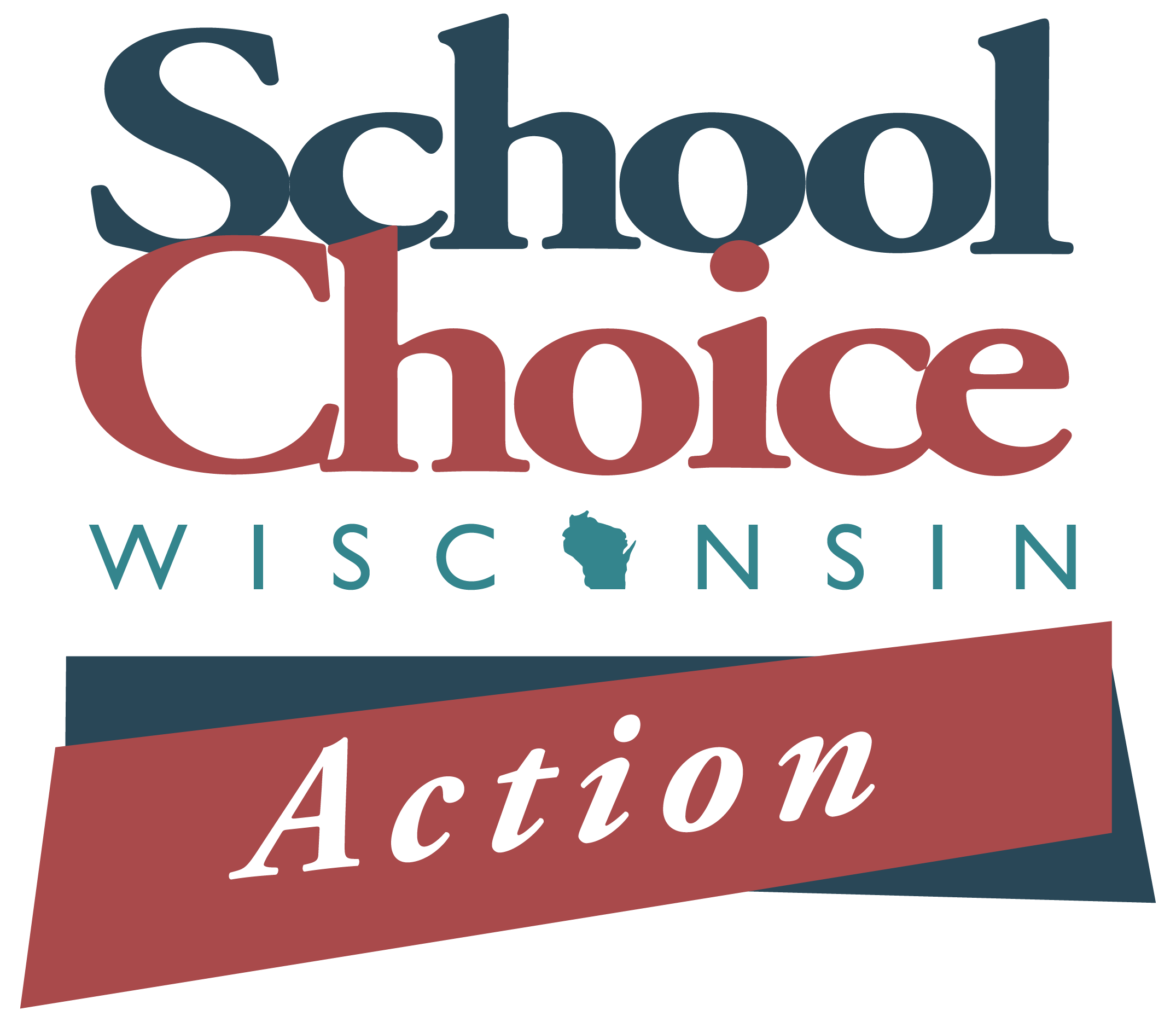Other Educational Options in Wisconsin
Charter Schools
- Public, nonsectarian schools created through a contract or “charter” between the charter school and its authorizing entity.
- No limit on the number of charter schools.
- Charter schools are generally exempt from most laws governing traditional public schools, allowing them greater autonomy in operations and curriculum
Barriers and Challenges
- Charters receive about 60 percent of per-pupil funding available to traditional public schools.
- Too many current chartering authorities are inactive.
See Tax-supported Wisconsin Education Options for description of types of charters.
By the Numbers
- Charter enrollment 2022–23: 48,982
- Independent charter enrollment 2022–23: 11,143
- Number of all charter schools: 239
- Per-student payment 2022–23 independent charters: $9,264

Open Enrollment
- Allows parents to apply for their children to attend public school in a school district other than the one in which they reside.
- Any Wisconsin resident in 4K to grade 12 may apply to attend a nonresident school district under the open enrollment program.
- Both the nonresident and resident school districts may deny an application for reasons specified in state law.
Barriers and Challenges
- A child may transfer to a nonresident school district for early childhood education or 4K only if the child’s resident school district offers the same type of program and only if the child is eligible for that program in the resident school district.
- Open enrollment applications are sometimes denied for space or other reasons such as habitual truancy or expulsion. If an application is denied by either the resident or nonresident school district, the parent may file an appeal with the DPI within 30 days. The DPI is required to affirm the school district’s decision unless the DPI determines that the decision was arbitrary or unreasonable.
By the Numbers
- Headcount for 2021–22: 71,489
- Deadline to apply: Late April in 2022
- History: Program began in 1998–99
- Per student payment for open enrollment 2022–23: $8,224
Details
- Applications in total 2022–23: 41,554
- Applications denied by nonresident districts: 6,892
- Geographical limit: Statewide

Homeschooling
While homeschooling is not a tax-supported option, it experienced significant growth during the pandemic as parents sought new options.
- Wisconsin law says a home-based private educational program must provide at least 875 hours of instruction each school year.
- State law contains no express authority for any agency or school district to monitor home-based private educational programs.
- Homeschooling accounts for 29,402 students in Wisconsin in 2021–22.
Barriers and Challenges
- Many parents are unclear on what freedoms they have relating to homeschooling, how to file homeschooling paperwork with the state, and what monitoring they will undergo from the state.
Details
- Parents must complete a PI-1206 form and file it with the state every school year.
- Under Wisconsin law, enrollment in a home-based private educational program is a substitute for attendance at a public or private school under the compulsory school attendance law, which begins at age six. Parents with children who have not turned six on or before September 1 of the year in question don’t need to file a PI-1206 homeschool form.
- There are numerous homeschool parent associations in the state.
- State law says a homeschool program must provide a “sequentially progressive curriculum of fundamental instruction in reading, language arts, mathematics, social studies, science and health.” The state provides no curriculum for home schooling.

